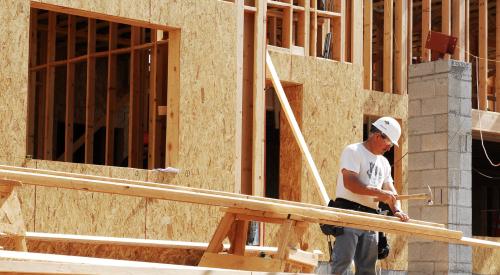|
Do you want to improve the efficiency of your home-building business? What about reducing waste and saving money? Want to give a big boost to customer satisfaction and referrals? If the answer to any of the above is yes, then you might want to consider forming a trade partner council (TPC).
Home builders that have championed trade partner councils (TPCs), and industry consultants who have helped put them together, say having one can pay off with a host of benefits for the builder, and probably even more for participating trades. They'll also tell you that it takes a concentrated effort, cooperation and ongoing dedication to make it work.
“It empowers our tradepartner base in a collaborative environment to achieve shared objectives. It builds camaraderie, shared vision and purpose,” says Chip Merlin, vice president of operations for K. Hovnanian/Landover Group, Chantilly, Va. “It taps the intellectual horsepower as well as the operational experience of the entire channel that works our manufacturing line. It also facilitates trade-partner-to-trade-partner collaboration.”
| TRADE PARTNER COUNCILS that thrive can attract a large conference room full of participants, as the K. Hovnanian Mid-Atlantic TPC has proven with over 300 people attending their recent bi-annual meeting held in Bethesda, Md. Photo: David Scott, Hearth and Home Technologies |
Merlin has been long involved with K. Hovnanian's Mid-Atlantic TPC, which is a combination of the Virginia and Maryland councils. The Virginia TPC was formed in 2003; Maryland's in 2005. They're still going strong (see “Fly on the TPC Wall,” page 30).
Trade participation in and commitment to the concept is what can make or break a TPC. Trades that put forth the effort to make it happen discover that it has its rewards.
“Trade partner council membership affords a window into the inner workings of their client,” Merlin says. “This knowledge is a powerful tool, allowing trade partners to refine their product, service and value proposition.”
Serge Ogranovitch, senior partner with the Potomack Group, Locust Grove, Va., explains that the objective of a TPC is to draw the builder and trades into a mutually beneficial relationship. But as he points out, “That's often easier said than done.”
Two-way street
It boils down to the simple fact that builders and their trades and suppliers need each other to survive and grow their businesses, which has been even more challenging in today's market.
“Individually and collectively, trade partners have the expertise that builders need to build quality homes as effectively as possible and to the quality level that exceed the builders' customer expectations,” Ogranovitch says.
Ogranovitch, who has helped create several TPCs, suggests that establishing trust among the builder and the trades is the key to making a TPC work well and thrive.
“Trust, or lack of trust, comes to mind when discussing trade councils,” he says. “In order for a council to be successful, the builder needs to be trusted by the trades,” he says, adding that trades also need to build trust between each other.
This trust can occur, but it takes time. “There needs to be a mutual desire to provide a quality product that exceeds customer expectations,” Ogranovitch says. In addition, he says, quality management processes promoting “first-time quality, every time” home delivery must be embraced by both the builder and trades.
Commitment is another essential ingredient for launching a TPC and keeping it intact. Both Merlin and Ogranovitch point out that if there's lack of dedication from either party, the council will become ineffective or fall apart.
“In order to put a trade council in place, the builder must make strategic management decisions that involve establishing and adhering to policies and procedures,” Ogranovitch says. “They need to have made the decision to involve the trades in their continuous improvement process as a full partner, and be willing to establish a true two-way communication process.”
Benefits of a TPC
Is it worth the effort? Those who have been involved in trade councils for many years say the rewards are real. They include:
- Reduction in waste
- Reduction in expenses
- Reduction and even elimination of job-site accidents
- Improvement in production scheduling and cycle times
- Improvement in customer satisfaction
- Improvement in quality
- Delivery of homes with zero defects
- Improvement in communications and camaraderie between everyone involved in the home-building process
- Pride for everyone involved by achieving best-in-class results.
“The focus is to do something to improve yourself and your company,” Merlin told a gathering of over 300 people at the most recent Mid-Atlantic TPC meeting. “Everyone walks away with something that ultimately benefits the home buyers.”
|











